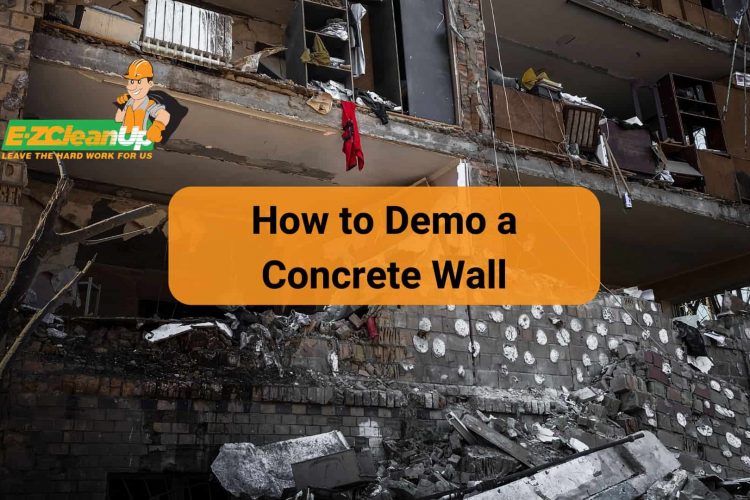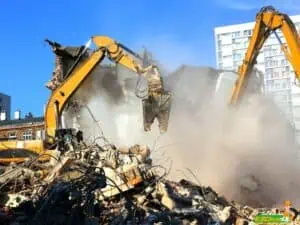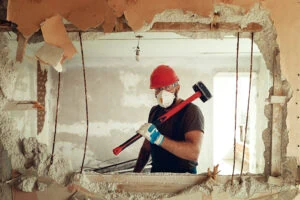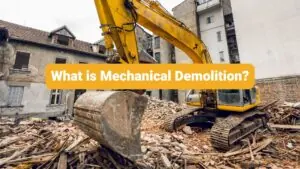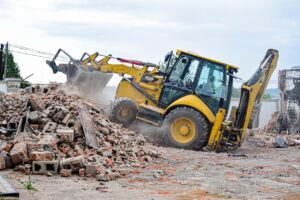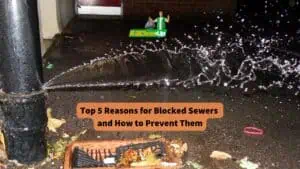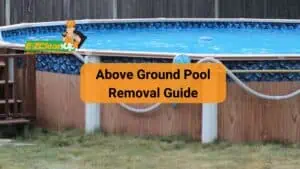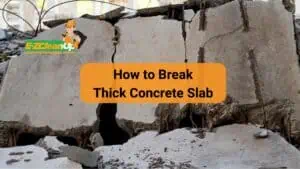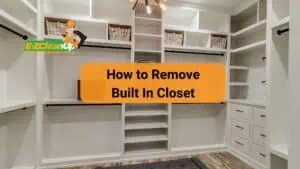To safely demolish a concrete wall, first ensure it’s not load-bearing and turn off nearby power. Equip yourself with a sledgehammer, jackhammer, and safety gear. Utilize scaffolding for high areas, contact “Dig Safe” for underground hazards, and prioritize protective equipment for all involved.
Learn about the right steps on how to demo a concrete wall in our guide below.
Preparing for Demolition
When you’re gearing up to take down a concrete wall, it’s not just about swinging a sledgehammer and hoping for the best. There’s a process that ensures safety and efficiency. Let’s break down the essential steps you need to follow:
Checking if the Wall is Load-Bearing
Before you make any moves, it’s crucial to determine whether the wall you’re targeting is load-bearing. Knocking down a load-bearing wall without the proper precautions can compromise your building’s structural integrity, potentially leading to a dangerous collapse. Consulting with a structural engineer or referencing building plans can give you the clarity you need.
Ensuring Electrical Safety by Turning Off Power
Before starting your demolition, switch off the power supply to the area to avoid any electrical hazards. This step is non-negotiable. It might also be wise to use a voltage tester to ensure that all electrical lines in and around the wall are indeed dead.
Gathering Necessary Tools and Equipment
The right tools can make or break your demolition project. For a concrete wall, you’ll need more than just brute strength. A sledgehammer and a jackhammer are the primary tools for breaking up concrete.
Additionally, for larger or more challenging projects, you might consider renting a Bobcat with a hydraulic or pneumatic breaker attachment. Safety gear is equally important, including goggles, gloves, and dust masks to protect you from flying debris and concrete dust.
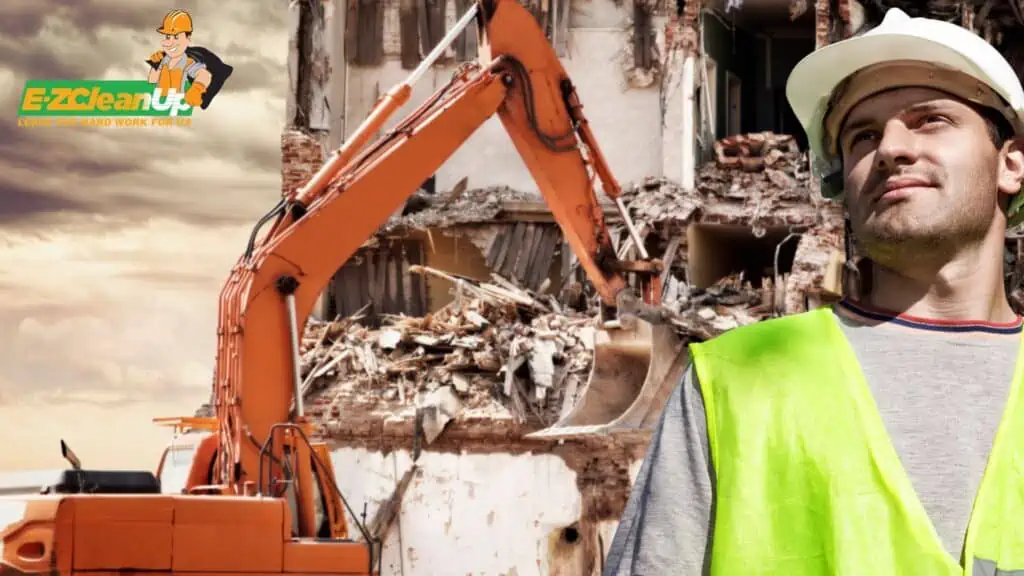
Safety Measures for Demolition
Aside from breaking things down, you must always prioritize safety and efficiency when tackling a concrete wall demolition. This means taking the right precautions to protect everyone involved, from the workers on the site to the environment around them.
Here’s how you can ensure safety throughout the demolition process:
- Wearing Appropriate Protective Gear: Every individual on site should be equipped with proper personal protective equipment (PPE). These include hard hats, safety glasses, respirators (to guard against dust inhalation), high-visibility clothing, protective footwear, and hearing protection. These measures are essential to safeguard against common hazards such as falling debris and loud noise.
- Importance of Calling “Dig Safe” Authorities: Before the demolition begins, it’s critical to know what’s below the surface. Contacting “Dig Safe” authorities or similar services can help identify and mark underground utilities. This step is crucial to prevent accidental damage to these services, which could lead to dangerous situations or costly repairs.
- Using Scaffolding for Higher Areas: When the demolition involves high areas, scaffolding is your best bet for safety. It provides a stable platform from which workers can operate. It significantly reduces the risk of falls and injuries. Scaffolding should be sturdy and well-constructed. It must be able to support the workers and any equipment they might use.
In addition to these measures, conducting an engineering survey and a Job Safety Analysis (JSA) before starting the demolition is highly recommended. These assessments can reveal potential hazards within the structure, like weaknesses or hidden damages.
Furthermore, falls remain a prominent risk in demolition work. Employers must ensure that any wall openings higher than 42 inches are guarded and that floor openings are securely covered. Protective measures for fall hazards, especially when working near basements or using aerial lifts, are indispensable.
To facilitate a safe and orderly demolition, removing hazardous materials, preparing a detailed demolition plan, implementing safety measures, and ensuring efficient waste disposal are essential steps.
Moreover, consistent communication among team members, adherence to the Occupational Safety and Health Administration (OSHA) guidelines, regular safety training, and performing risk assessments are vital components of a comprehensive safety strategy during demolition.
Methods for Breaking Down Concrete Walls
Breaking down a concrete wall requires careful planning and the right approach to ensure safety and efficiency. Here’s a look at the three primary methods utilized for this task, each suitable for different situations based on the wall’s thickness and specific project requirements.
Mechanical Methods: Jackhammers and Rotary Hammers
For thick concrete walls, especially those that are 3 inches deep or more, the jackhammer stands out as the go-to tool, thanks to its powerful demolition capability.
For a more handheld approach, rotary hammers offer a chipping function that proves effective in various concrete removal tasks. They act similarly to a jackhammer, but on a smaller scale. Both tools are instrumental in efficiently breaking down substantial concrete structures.
Chemical Methods for Specific Situations
When demolition requires a quieter and more controlled approach, chemical methods come into play. One such method involves the use of chemical bursting, where an expansive slurry is inserted into drilled holes.
This causes the concrete to split without noise, vibration, or significant dust generation. This method is particularly advantageous in sensitive environments where traditional mechanical means may not be suitable.
Manual Methods for Thinner Concrete
For thinner concrete walls, manual methods can be both practical and effective. Tools like digging bars and sledgehammers can create fault lines in the concrete. Although demanding more physical effort, these tools offer precision in demolition tasks where mechanical and chemical methods might be excessive.
In addition to these methods, advancements in concrete demolition technologies have introduced several other techniques, including diamond drilling, core drilling, and wire sawing. These methods provide precise and efficient ways to cut through concrete. They enable clean and controlled demolition in various situations.
Efficient Demolition Practices
Here are some of the practices that ensure an effective demolition process:
Starting from the Top: Using Gravity to Your Advantage
Initiating the demolition from the top of the wall can leverage gravity. It helps bring down the structure in a more controlled and safer manner. This method enhances efficiency by reducing the effort required to handle and remove debris.
Managing Large Chunks and Disposal Logistics
Handling and disposal of large concrete chunks are pivotal to maintaining an efficient demolition site. The use of machinery such as excavators, breakers, and wire saws can facilitate the breakdown of large concrete structures into manageable pieces.
Efficient debris management, including the renting of dumpsters with gates for easy loading, is crucial to keeping the site clean and reducing potential disruptions. This approach not only ensures a tidy workspace but also aids in the smooth progression towards the next phase of your project.
Considering Recycling and Repurposing Demolished Concrete
Recycling and repurposing the construction debris align with sustainable demolition practices. They significantly reduce waste and potentially cut costs on future projects.
Techniques such as hydraulic bursting for confined spaces, wire sawing for precision cuts, and employing explosive demolition in controlled environments can facilitate the easy segregation of concrete for recycling purposes. This aids in eco-friendly construction practices while promoting the conservation of resources.
In addition to these practices, exploring alternative demolition techniques like hydrodemolition and micro-blasting can offer less conventional, yet highly effective methods for breaking down concrete structures. Hydrodemolition, for instance, uses high-pressure water for surface preparation or removal. On the other hand, micro-blasting involves controlled, small-scale explosions to break concrete with minimal flying debris and noise.
Adhering to safety protocols cannot be overstated. Ensuring the use of protective gear, proper training for workers, and keeping unauthorized personnel away from the site is imperative. Additionally, staying compliant with local regulations, including obtaining necessary permits and managing the environmental impact of the demolition process, ensures smooth and responsible project execution.
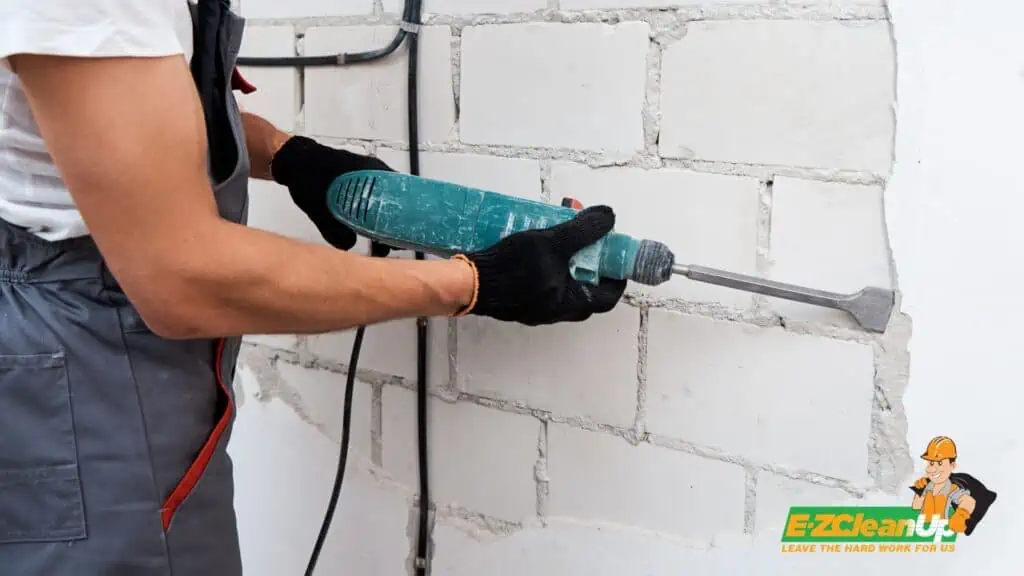
Post-Demolition Clean-up and Disposal
After the dust settles from demolishing a concrete wall, handling the aftermath efficiently ensures a clean and safe environment, ready for the next steps in your project. Here’s a structured approach to post-demolition cleanout and disposal of concrete debris:
Options for Concrete Debris Disposal
Commonly, debris is taken to construction and demolition recycling centers, where it can be processed and repurposed for future use. Another option is to work with building material recycling companies that specialize in crushing concrete for reuse in new construction projects.
For less reusable material, local landfills and transfer stations may accept construction debris. However, this is generally seen as a less eco-friendly option.
Working with Local Masons or Landscapers for Recycling
These professionals often seek out recycled concrete for various projects. These include creating pavers, retaining walls, and other landscaping elements. This collaboration aids in waste reduction while supporting local businesses and promoting sustainability within your community.
Professional Removal Services for Large-Scale Cleanups
For projects that result in a significant amount of debris, hiring professional junk removal services, like us at EZ CleanUp, can streamline the cleanup process. We have the equipment to handle and dispose of large volumes of concrete efficiently and responsibly.
Additionally, we have the means to recycle the material and ensure it gets a second life in new construction projects. By relying on our expertise, you can save time and ensure that your project adheres to local regulations regarding waste disposal and recycling.
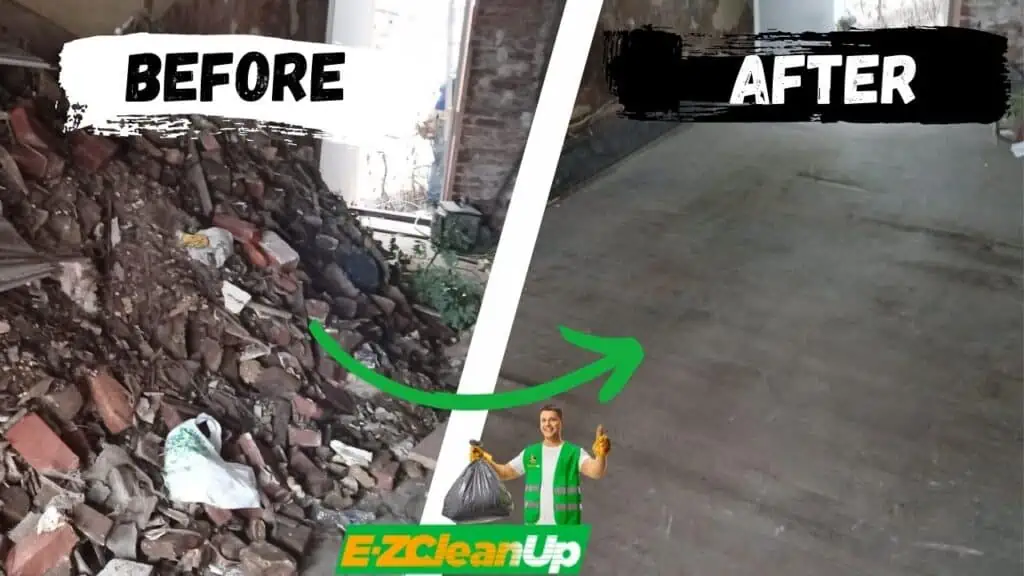
Beyond the Rubble: Your Next Step
With the right approach and tools, demolishing a concrete wall can be both safe and efficient. But what happens after the dust settles? EZ CleanUp steps in to ensure that your project moves forward without a problem.
From clearing out debris obtained during the demolition to responsibly disposing of almost any kind of junk, our team is equipped to handle the cleanup. We provide comprehensive services, including junk removal, dumpster rental, and light demolition, all tailored to meet the needs of both residential and commercial properties.
Let us be your partner in making the cleanup process as smooth and hassle-free as possible. Contact us today to learn more about how we can assist with your next project.

